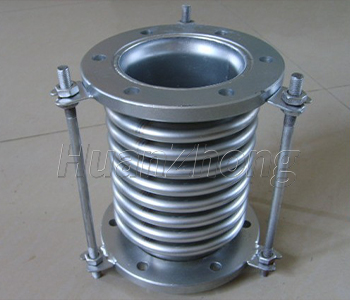Service life and temperature resistance of corrugated compensator
Service life and temperature resistance of corrugated compensator
The service life is the number of fatigue times guaranteed by the full rated displacement of the corrugated compensator under tension conditions. Since there are many factors affecting the service life, the determination of the service life should be very strict. In addition to the adequate safety factor given in the design calculations, it must be ensured by tests. The rated life given by the compensator must be guaranteed to be 2-5 times the average experimental life.
In this series, the rated life is generally set to 1000 cycles, which is sufficient in most cases. However, the specific case should be treated differently, mainly depending on the frequency of full rated displacement in actual operation. Some work more frequently, such as intermittent steam supply, working one or two trips a day. 1000 times the rated life is obviously not enough. Some operating frequency is very low, the equipment can work steadily for a long time after starting operation, temperature fluctuations are small, compensation displacement is very small, and only shutdown to cool down during maintenance. Its actual required life is very low. Some products set the service life at 200 times, that is the reason.

The temperature resistance of the bellows compensator depends mainly on the temperature resistance of the bellows material. The working temperature of the compensator is as low as -196℃ and as high as 1000℃, or even higher. It needs metal materials with various temperature resistance to meet the use requirements. But the temperature resistance of the material is limited, in such a large temperature range alone is impossible to solve the temperature resistance of the material itself, other measures must be taken to improve the working temperature of the expansion joint. Most of the corrugated compensator working temperature is below 400 ℃, carbon structural steel, low-alloy structural steel and austenitic stainless steel and other materials can be competent.
1, high temperature materials when the working temperature is higher than 550 ℃, high temperature alloys can be used. According to the working temperature and working medium, the appropriate material can be selected from GBN179, GBn180, GBn273, GBn275.
2, other measures when the metal material can not fundamentally solve the problem, you can use heat insulation. Add different degrees of heat-resistant insulation materials between the conduit and the bellows to prevent direct contact between the high-temperature medium and the bellows, so that the heat of the medium is slowly transferred to the bellows. Also take natural or artificial cooling measures outside the expansion joint, so that the actual temperature of the bellows is lower than the allowable temperature of the bellows material. It is also possible to continuously pass low temperature steam or air between the guide sleeve and the bellows. An air layer is formed between the two, which brings the heat transferred to the bellows into the tube and plays an adiabatic role.
